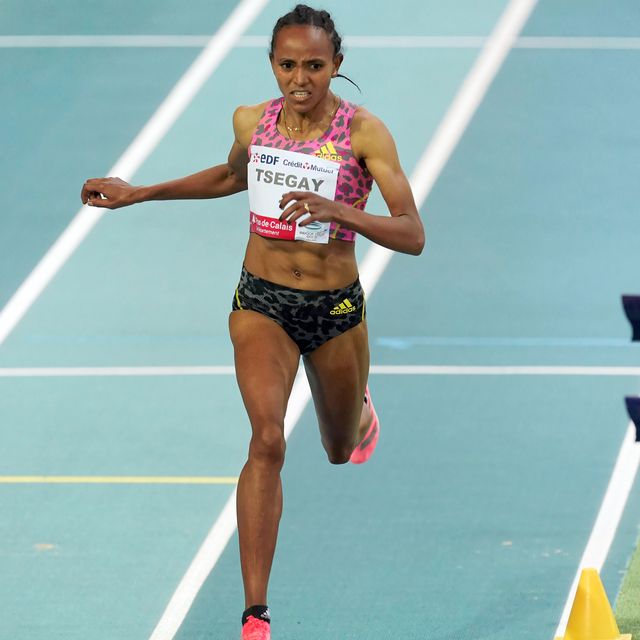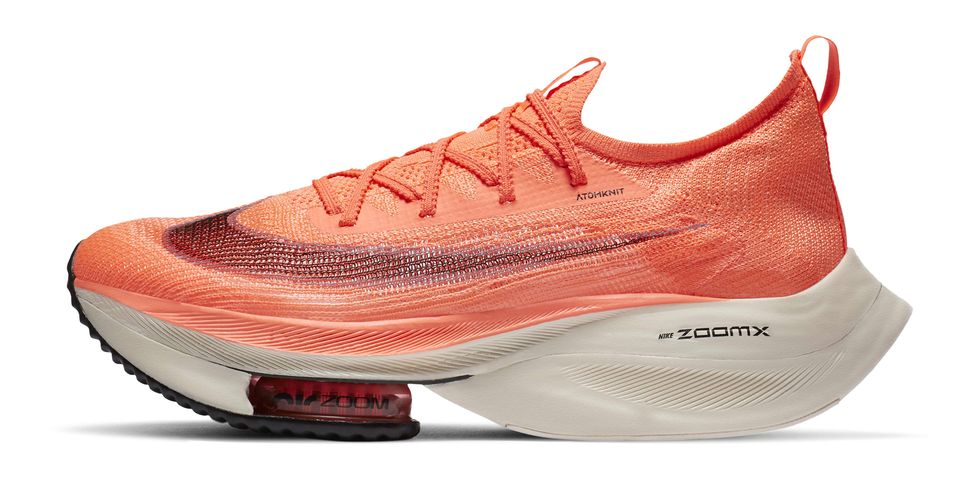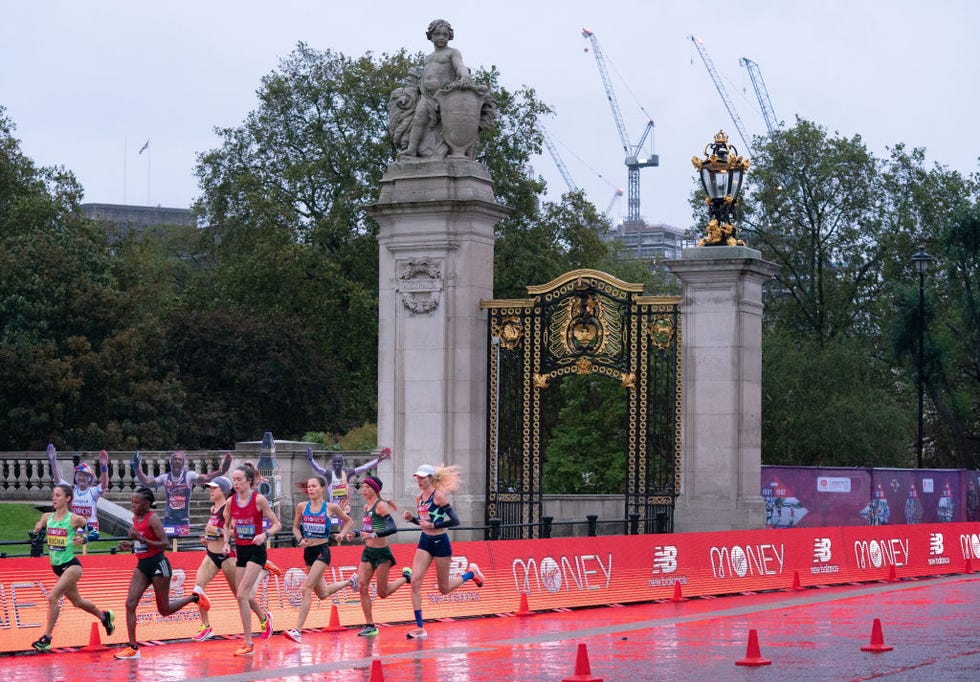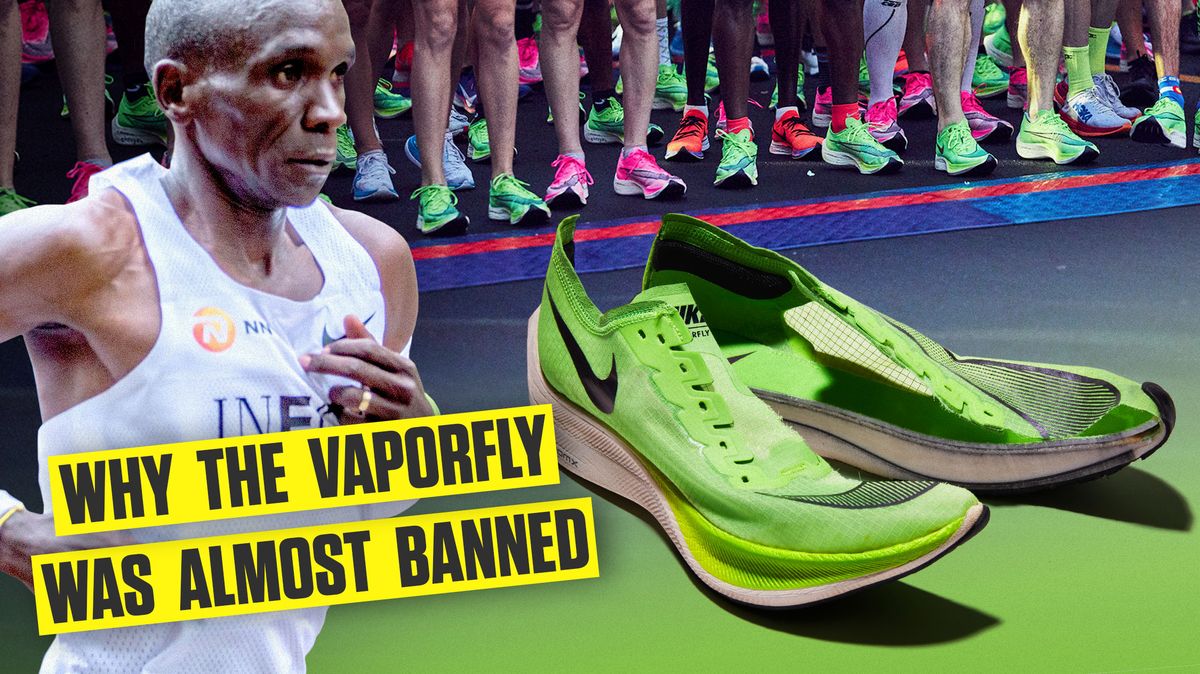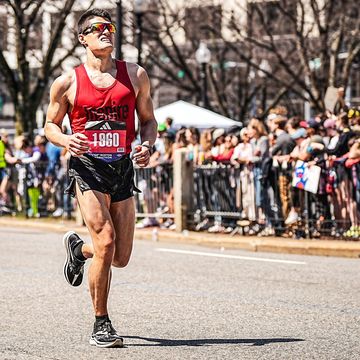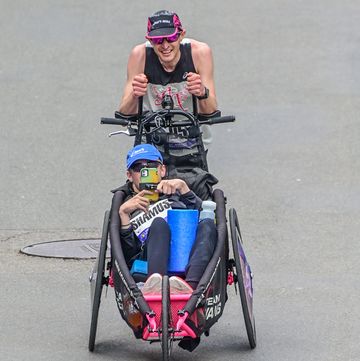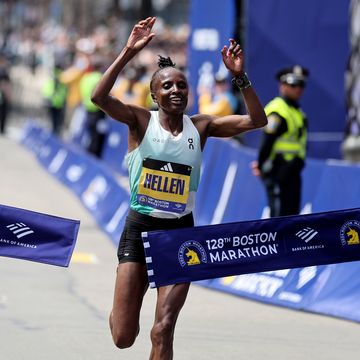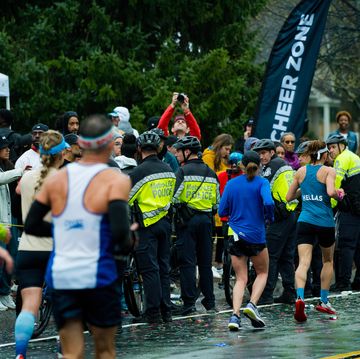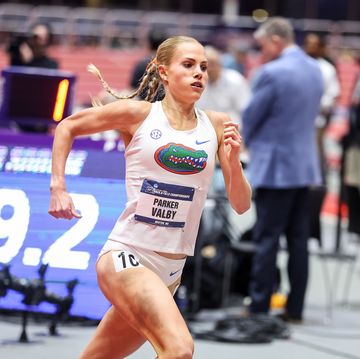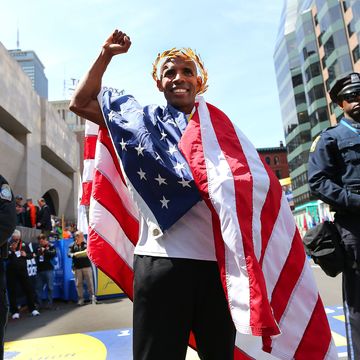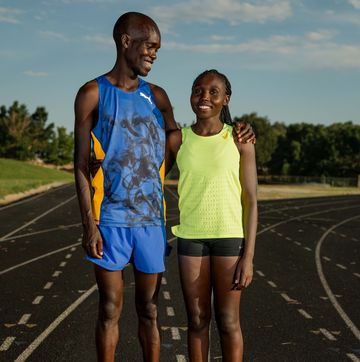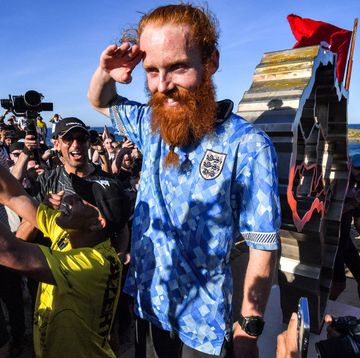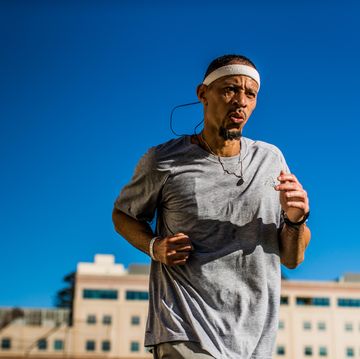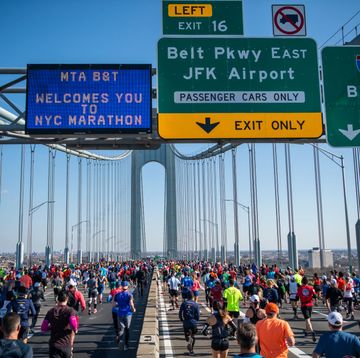The times have been spectacular across the globe.
In Europe, four men broke the previous world half marathon record in December in Valencia, Spain. Earlier this month, Gudaf Tsegay of Ethiopia set a world record for the indoor 1500 meters on February 9, running 3:53.09 at a meet in Liévin, France.
Closer to home, Americans Sara Hall, Keira D’Amato, Martin Hehir, and Noah Droddy reshuffled the list of top 10 Americans in the marathon.
On the track, Donavan Brazier, Bryce Hoppel, Elle Purrier, and Grant Holloway have set American or world records.
High school and college athletes are in on the action, too. Hobbs Kessler set the high school indoor mile record with his 3:57.66, and Cooper Teare of the University of Oregon took almost 2 seconds off the collegiate mile record when he ran 3:50.39. Athing Mu at Texas A&M, who was thought to be an 800-meter runner, has been turning in world-class 400-meter splits and anchored her teammates to a collegiate record in the 4x400 meters.
What’s going on with all these fast times? Yes, there is new shoe technology, but it goes well beyond that for these record-shattering runners.
No matter what you need to improve in your running life, find it with RW+!
Shoe technology that changed road racing is now changing track racing
Back in 2017, when Eliud Kipchoge attempted for the first time to break two hours in the marathon on a racetrack in Monza, Italy, he wore a new type of shoe from Nike, the Zoom Vaporfly Elite. The shoes promised a 4 percent efficiency benefit, through a combination of a new type of foam, which was lighter and more responsive than previous foams, and a stiff carbon fiber plate to stabilize the foam and move the foot as it pushes off the ground.
Nike’s innovative design has evolved since 2017 and has been emulated, with varying degrees of success, by other shoe brands, like Saucony and Adidas. Now the same technology—better foam with a stiff plate inside—has moved into track spikes, said Geoff Burns, a post-doctoral fellow at the University of Michigan who is researching biomechanics and sport performance.
“The absolute effect may be a little bit smaller,” he said. “But because of the controlled environment and frequency of racing on a track, it’s much more apparent.”
Burns said that although Nike’s competitors are closing the gap, he hesitates to say that they’ve caught up. He praises Adidas and Saucony road shoes, and Adidas and New Balance for track spikes. “But if I were getting on a starting line, for a marathon or a track race, I would be in the Nike shoes,” he said.
Races are set up in near-perfect conditions
With the pandemic, the traditional lineup of road races and track meets has gone out the window, as race organizers have grappled with how to stage events safely.
In their place, pro runners, needing to race, have turned to time trials. And many of these are set up according to exact specifications.
Take The Ten, a track meet on February 20 in San Juan Capistrano, California. In two 10,000-meter track races, athletes—almost exclusively from the Bowerman Track Club in Portland, Oregon—were paced to try to get the Olympic standard in the event, which is 27:28 for men and 31:25 for women.
In the women’s race, Vanessa Fraser and Courtney Frerichs (the American record holder in the steeplechase), set a perfect pace, running 74- or 75-second laps. Fraser led for the first two miles, Frerichs took over and set the pace through four miles, 16 of the 25 laps. Her teammates could turn off their brains and follow behind. In the end, Elise Cranny won in 30:47 and five women hit the standard, four from Bowerman plus Eilish McColgan of Great Britain. The results of the men’s race were similar: Evan Jager and Sean McGorty paced, Marc Scott won in 27:10, and five runners achieved the Olympic standard.
“We are fortunate to have [teammates] who can pace a race for three or four miles,” said Marielle Hall, a Bowerman runner who finished fifth in 31:21. “That doesn’t happen that often. We’re pretty lucky.”
The Marathon Project, on December 20 in Chandler, Arizona, was similar in some ways. Organizers picked a perfectly flat U-shaped loop. Runners went up one side of a 2.1-mile stretch of road and back down the other. Pacers for the top men and women kept a steady pace through 18 miles. In the end, Martin Hehir ran 2:08:59, and Sara Hall ran 2:20:32. Hehir is now eighth on the list of fastest U.S. marathoners; Hall is second among women.
Athletes have benefited from long training blocks—and now they’re itching to race
In a typical season, many college runners race too frequently. They compete in three seasons—cross country, indoor and outdoor track. They might travel the country every other week, chasing top-level competition and in track, qualifying marks for nationals.
But that’s not the case this year. Last March, just as the pandemic was spreading across the country, the NCAA canceled indoor nationals. (Many athletes were already at the meet.) The outdoor season was quickly called off, and the cross-country season, which was supposed to happen in the fall of 2020, was pushed to winter.
The result? College runners have had long blocks of uninterrupted training time with little or no racing outside of team time trials. They’re eager to race again, and they’re reaping the benefits of the extended period of training.
Pros, too, may have benefitted from less racing than usual. And many have the feeling that finally, now that racing is back in some form, it’s time to run fast, especially in the buildup to the Olympic Trials. “The pent-up demand to have races — that definitely has something to do with it,” said Mark Coogan, coach of Team New Balance Boston, who coached Elle Purrier to a 9:10.28 American record in the two mile on February 13.
In a sense, track athletes have been forced to train as marathoners do, with long blocks of dedicated training toward one event, Burns said. “I think there could be enormous gains to track and field performances by taking the same approach: Hunker down and focus.”
Marielle Hall said that training and limited racing through the pandemic has been “all been just one giant experiment.” Bowerman workouts, designed by head coach Jerry Schumacher, are getting harder. Splits they aim for during interval workouts are faster. They do more reps. “Those kinds of things are constantly evolving, changing to fit people’s new fitness level,” she said. “It looks a lot more effortless than it is.”

Sarah Lorge Butler is a writer and editor living in Eugene, Oregon, and her stories about the sport, its trends, and fascinating individuals have appeared in Runner’s World since 2005. She is the author of two popular fitness books, Run Your Butt Off! and Walk Your Butt Off!
